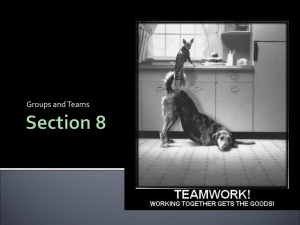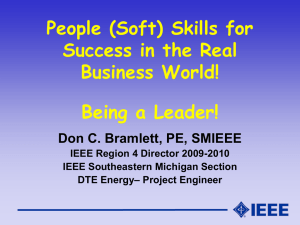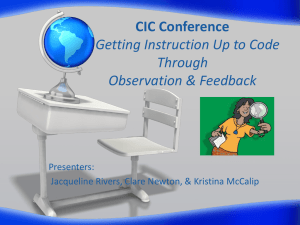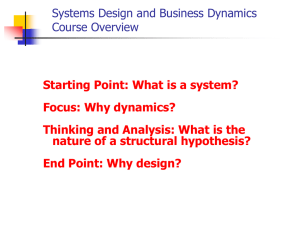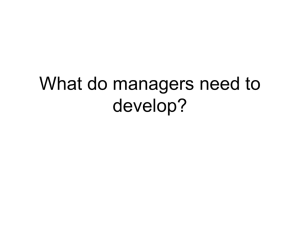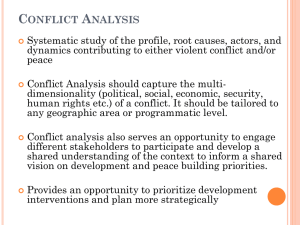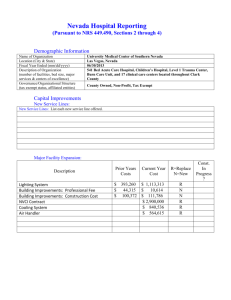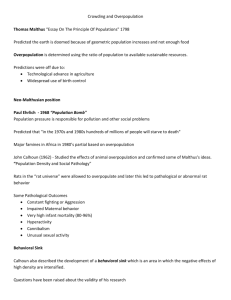Session 7 - Team Leadership- Inspiring Others to Deliver Results
advertisement
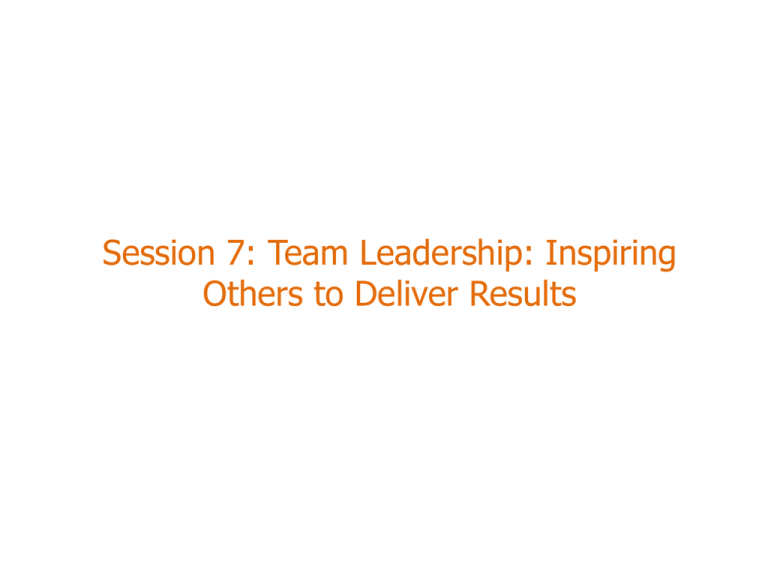
Session 7: Team Leadership: Inspiring Others to Deliver Results Warmth & Strength Warmth & Strength Warm Source: Cuddy, et al., Harvard Business Review, “Connect, Then Lead” Cold Warmth & Strength Warm Source: Cuddy, et al., Harvard Business Review, “Connect, Then Lead” Cold Performance Pressure Performance Pressure in Action We were seriously “ feeling the heat … it was a make-or-break project for us. We threw our best and brightest against the problem, but the more we rallied our team, the worse it got. I still don’t know what went wrong. ” - Partner, Big Four accounting firm Performance Pressure Paradox In high-stakes projects, when teams need to use their best, most innovative knowledge… Performance Pressure Concerned Client Risk Aversion They do so the least Reduced Innovation: reliance on “tried-and-true” Dysfunctional Team Dynamics Team Dynamics under Performance Pressure Spot the “Crowding Out” Effects of Pressure Seem familiar? Team dynamics are portrayed perfectly in this FedEx.com spot Spot the “Crowding Out” Effects of Pressure Consensus Drive How does it USUALLY play out? As teams push toward completion, they drive for consensus in a way that shuts down paths to further exploration. Keep up the debate and we’ll be here all night. Spot the “Crowding Out” Effects of Pressure Conformity to Team’s Hierarchy C’mon, that’s enough already. Everyone begins unwittingly to defer to authority Safer to shut up Spot the “Crowding Out” Effects of Pressure Focus on Common Knowledge Everyone lends more weight to commonly held information than to individuals’ unique knowledge. If we all think it, it must be right. Accounting for Optimal Contributions Kickoff Meeting Check-in Have the leadership team complete the four-item score card assessment at the kickoff meeting Revisit the individual self-assessments as a team at regular intervals to improve expertise use • What competencies do you want to learn? • What proficiencies do you need to demonstrate? • How much progress have you made toward your goals? • What areas do you still need to work on? Steps you need to take to move toward your goals • How will you gain experience to move toward your goals? • Be specific! • List concrete ways you have made progress. The knowledge and experience you can bring to bear on this project • What prior engagements have addressed similar issues? • What experience do you have with this particular client, and what did you learn from it? • With other firms in the sector? • Have you contributed as much as you expected? • If not, have the engagement’s needs changed? • If so, be precise about why your prior knowledge is no longer relevant as expected. Ways to leverage the range of your knowledge and experience • What do you know about… • The industry and its competitive dynamics? • The client’s culture, politics, and decision-making styles? • The client’s processes, systems, and technology? • Which kinds of knowledge have you brought to bear and how have they influenced the project? • Which knowledge has been underused? Your development goals Case Wrap Lead Your Team to High Performance Think RED to lead your team to high performance Reflect V Equip V Deliver Pop Quiz Q: What are the two biggest differences between successful versus derailed executives? A: 1. Handling interpersonal relationships (“Under stress the derailed executives became abrasive and intimidating”) 2. Ability to build and lead a team Sources: Center for Creative Leadership; McCall & Lombardo, 1983; Van Velso & Leslie, 1995; Gentry & Chappelow, 2009 and many more What Training Would Help? You Your team members Typical response: Providing social support Time management / Planning “I’m surely seen as trustworthy, but I’d better prove my worth. They could do a better job of connecting with people.” Source: Wojciszk & Abele Preparing an Effective Team Reflect True self-awareness is essential for authentic interpersonal relationships. Reflect, but not in a vacuum. Building an Effective Team A Compelling Purpose Must Be: Equip • Essential starting point • Requires understanding and buy-in • Facilitates peer-to-peer accountability • Ideally includes bottom-up participation but ultimately requires ONE answer Shared Clear Meaningful Challenging Building an Effective Team Common Traps for New Leaders: Equip 1. Sticking with the existing team too long 2. Tolerating mediocre performance in belief that your own leadership will turn it around Avoiding These Traps Requires: 1. Quick, but accurate, diagnosis of team members to assess technical expertise, interpersonal skills, and personal characteristics 2. Willingness and courage to act. Leading an Effective Team Deliver Key to use the social dynamics of the team to manage individual members. Do NOT manage the team on an individual-by-individual basis. Leading through a team by using social bonds among members to shape behavior elicits more commitment and effort from the members of the team. Superior Team Performance Holistic • Results • Growth • Sustainability • Context Adaptable • Composition • Competitors • Incubate Contagious • Transmit • Export Put into Practice Lead Your Team to High Performance Think RED to lead your team to high performance • When are you most energized? Reflect • When has your team been most inspired to deliver holistically superior performance? • How do you handle pressure? • Do you focus more on demonstrating warmth or strength? V • Purpose: compelling & shared Equip • Resources: knowledge portfolio; diverse perspectives; time; trust • Capabilities: technical, individual and interpersonal V • Coach Deliver • Span boundaries • Generate accountability • Learn from mistakes Take-Away Points Leveraging Performance Pressure Performance pressure is a double-edged sword. Can make people risk averse, less creative, more controlhungry, unwilling to listen. Use it to motivate people to live up to their highest potential – as a team. No pressure, no diamonds. What Are You Still Doing? The best leaders push down not only the work but also the leadership. Team members hold each other accountable, support and inspire each other to achieve their fullest potential. Closing Thoughts Directing, motivating and developing subordinates is one of the greatest differences between successful versus derailed executives. Sustainable high performance requires leading through your team: leveraging members’ knowledge, motivation and mutual accountability.

